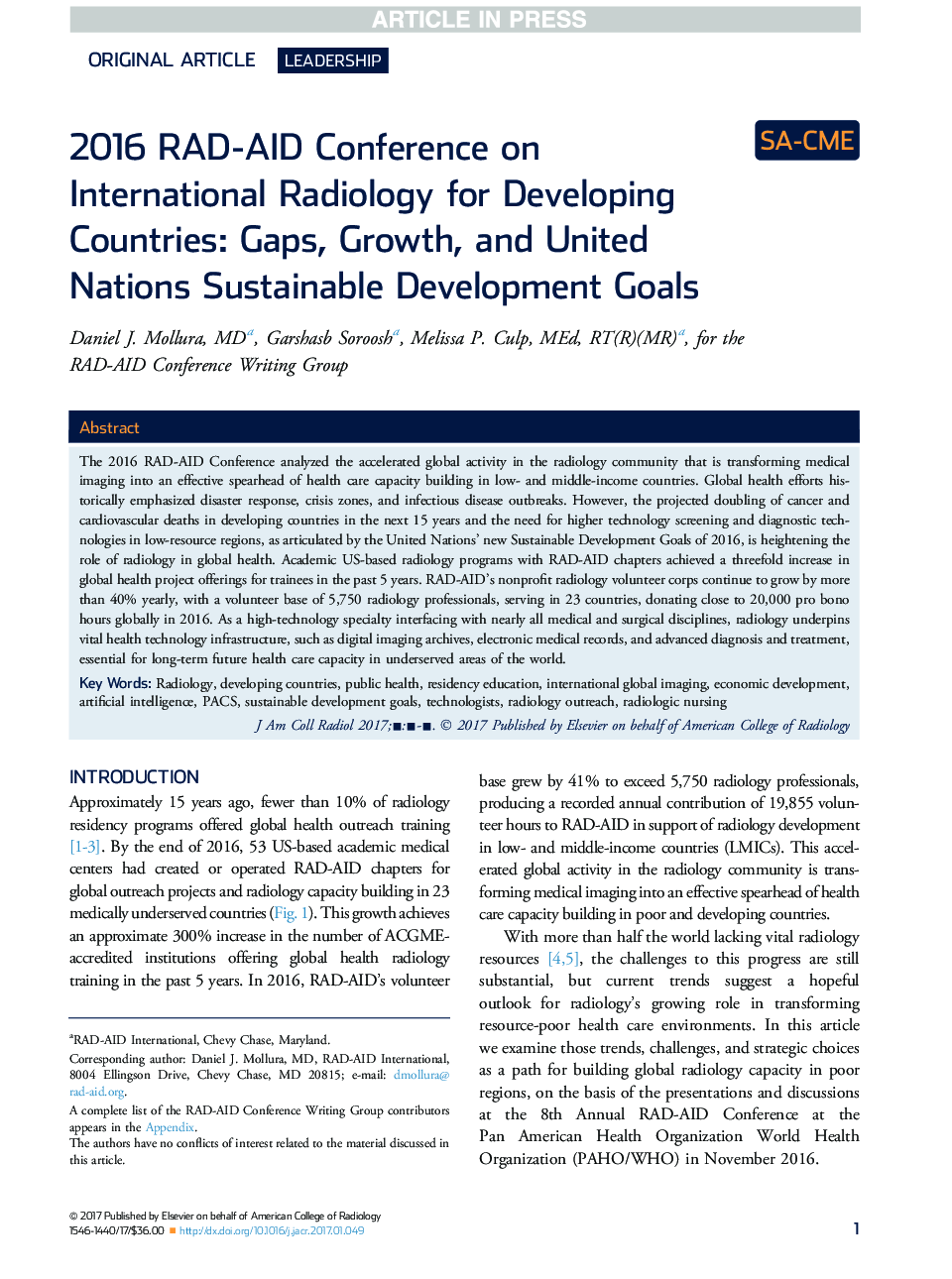| Article ID | Journal | Published Year | Pages | File Type |
|---|---|---|---|---|
| 5726879 | Journal of the American College of Radiology | 2017 | 7 Pages |
Abstract
The 2016 RAD-AID Conference analyzed the accelerated global activity in the radiology community that is transforming medical imaging into an effective spearhead of health care capacity building in low- and middle-income countries. Global health efforts historically emphasized disaster response, crisis zones, and infectious disease outbreaks. However, the projected doubling of cancer and cardiovascular deaths in developing countries in the next 15 years and the need for higher technology screening and diagnostic technologies in low-resource regions, as articulated by the United Nations' new Sustainable Development Goals of 2016, is heightening the role of radiology in global health. Academic US-based radiology programs with RAD-AID chapters achieved a threefold increase in global health project offerings for trainees in the past 5 years. RAD-AID's nonprofit radiology volunteer corps continue to grow by more than 40% yearly, with a volunteer base of 5,750 radiology professionals, serving in 23 countries, donating close to 20,000 pro bono hours globally in 2016. As a high-technology specialty interfacing with nearly all medical and surgical disciplines, radiology underpins vital health technology infrastructure, such as digital imaging archives, electronic medical records, and advanced diagnosis and treatment, essential for long-term future health care capacity in underserved areas of the world.
Keywords
Related Topics
Health Sciences
Medicine and Dentistry
Radiology and Imaging
Authors
Daniel J. MD, Garshasb Soroosh, Melissa P. MEd, RT(R)(MR),
